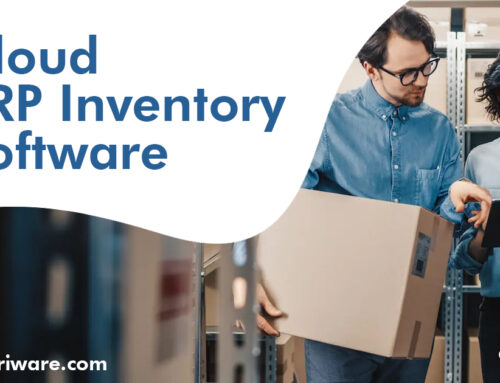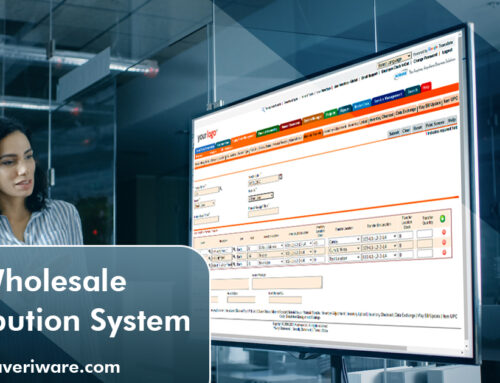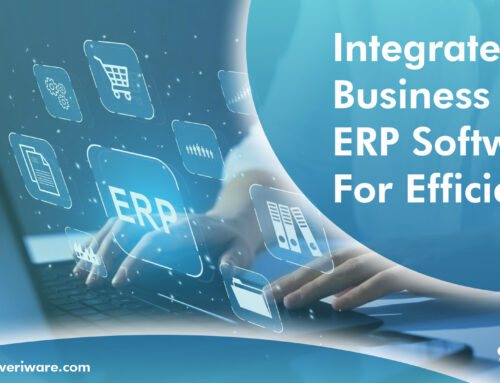Why Fully Stocked Warehouses Need Cloud Inventory Management Software? Let’s be honest: all-night stock take blitzes and over-complicated excel spreadsheets are painful to use, unnecessarily labor-intensive, and incredibly outdated.
Why torture yourself and your team when there are cheaper and faster options available online? Sure, you might run a small business on a tight budget and can’t justify big, fancy new software. Luckily for you, cloud inventory management is actually more affordable than the old-school methods you’re currently using and that’s just one perk.
Below we’ve compiled seven reliable ways, cloud inventory management is a smart investment for your business. Let’s discuss a little deeper.
1.Access Real-Time Inventory Control
Easy stock control is one of the most exciting benefits of cloud inventory management. Instead of combing through piles of reports from different systems and departments or worse making “educated” guesses cloud software lets you view up to the minute data on inventory levels through easy-to-understand reports and dashboards.
And instead of relying on special, manual stock-takes that require extra labor and could interrupt your operations (costly for growing businesses and large, multi-location companies alike), cloud inventory software often includes features like QR code tracking that allow you to actively measure stock as it flows through your operations which can save you much more than the cost of a monthly software subscription.
But the time-savings don’t end there the automation cloud inventory systems bring can drastically reduce the number of costly human errors you and your team make.
2.Get Up-To-Date Inventory Reports & Insights
If you’re business savvy, you probably know your top 5 best-selling products but do you know your lowest-selling? You may notice how well you sell during Christmas, but do you know when demand actually peaks and troughs?
Questions like these are answered by inventory reports automatically generated by cloud software. By knowing your lowest-selling items, you can make strategic decisions like upgrading those products, changing your marketing tactics, or ditching them altogether to focus on something new.
And knowing when demand for your products is actually at its peak, you’ll be able to order enough stock without overdoing it, saving money and storage space while also maintaining enough safety stock to prevent “out of stock” notices that cost, you customers.
With the inventory reports, you’ll get from cloud inventory software, you’ll be able to deeply understand the last quarter so you can effectively forecast for the next, which means better customer service and faster business growth.
3.Speed Installation & Easier Employee Training
The old way of doing business required you to install software on each and every computer your team uses and have a dedicated IT department to keep that software running.
This cuts into profits slow down training time and increase labor costs. Cloud software doesn’t require any additional employees or special hardware you just log in and get to work!
And since they don’t rely on dedicated in-person training to teach your team how to use the new software, most cloud companies have streamlined their software’s learning curve so that everyone can understand the basics and start using it on day one.
4.Quick QR Code Tracking Systems
QR and barcodes are essential to modern cloud inventory management; if you’re not using them, you’re practically living in the supply chain dark ages.
Paired with the right cloud software, they provide detailed, real-time insight into your inventory levels across your operations, saving you from ordering too much (which forces you to sell at clearance prices) or ordering too little (which forces you to break out that costly “out of stock” sign).
While this is a more effective strategy than depending on educated guesses, with a reliable cloud inventory management system that uses QR or barcode technology, a few simple changes to your production processes can provide much more accurate data that lets you know exactly how much inventory you have in stock – saving you hours of time and reducing human error.
5.Smooth & Continuous Ecommerce Integration
Can you imagine manually entering all the data from your e-commerce platform into your inventory management system, and then again into your accounting software? If you operate like many other businesses, you might not have to imagine it – that may be your day-to-day reality. Fortunately, you can sidestep or end that nightmare with cloud inventory management software.
By automatically syncing data across multiple top business applications like Shopify and Xero, modern inventory management software can save you a ton of time spent on manual data entry.
This allows you absolute control over your operations across all channels, enabling you to see where your inventory is currently held, the status of your purchase and sales orders, and ensure your accounting is up to date and accurate all from one place.
6.Manage Multi-Site Operations from Anywhere in The World
While there are many benefits of cloud inventory management, one of the most important for the busy entrepreneur is being able to operate their business any time, any place.
With cloud software, you can manage multiple warehouses wherever you are, allowing you to buy, sell, and manufacture with ease. If your team operates remotely, then your product manager in Detroit can update your distributor in New York in real-time.
And you can generate reports on the spot for a trade show in LA or for a business presentation to new investors in Hong Kong. 24/7, anywhere accessibility makes cloud inventory software perfect for startups without a physical location and international companies alike.
7.Upgrade Your Business with Cloud Inventory Management
Today, there’s no good reason to use clunky, complicated and error-prone manual methods of supply chain management. With the right cloud inventory management software, you’ll save more than enough time and money to justify the upgrade. Sure, you can stay stuck in the 20th century. Or you can invest in the continued growth of your business by updating your inventory management systems today.







